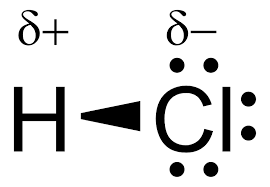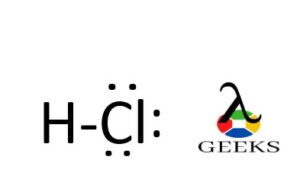In this article, we will discuss about How is HCl covalent : why, How and detailed explanation, also describe the lewis structure of HCL.
Hydrochloric acid is a simple diatomic molecule made up of hydrogen and chlorine molecule and is found in both aqueous and gaseous forms. The electronegative chlorine atom and hydrogen atom form a polarized covalent bond. When the compound is formed by both nonmetal then it forms covalent bonds.
And when one atom is a nonmetal and another is metal then it forms an ionic bond. In the HCl molecule, hydrogen and chlorine are non-metals so both share electrons with each other hence it is a covalent molecule and forms a covalent bond.
Why HCl is Covalent in Nature?
The electronegativities of hydrogen and carbon atoms in the HCl molecule are different and share electrons with each other while forming a covalent bond, which is referred to as a polar covalent bond.
The electronegativity of the chlorine atom is 3.16 while that of the electronegativity of the hydrogen atom is 2.20, the difference is 0.96 on the Pauling scale indicating that H-Cl is a covalent bond. In spite of that during electrolysis of HCl, it forms ions like ionic compounds but these ions are not dissolved in water like another covalent compounds, the formation of ions is due to the use of water as a solvent. In absence of water, HCl could not form ions hence HCl is a covalent compound.
How is HCl covalent ?
In a hydrogen chloride molecule, the Hydrogen atom is less reactive hence it gains shred electron pair and acquires a partial positive charge while that of chlorine is more electronegative than hydrogen hence it attracts shared electron pair towards itself and acquires a partial negative charge. Due to different electronegativities, molecules have opposite poles is known as their polarity thus in HCl molecules hydrogen and chlorine have a different electronegativity due to which hydrogen and chlorine have opposite poles. Hence hydrogen chloride is polar in nature and the bond between hydrogen and chlorine is a covalent bond.
Structure of HCl molecule
Hydrogen gas is present in the first group while chlorine gas is present in 17th group of the periodic table, as a result, hydrogen has one valence electron and chlorine has 7 valence electrons total of 8 valence electrons present in the HCl molecule. hydrogen requires 1 electron to complete its octet, while chlorine also requires 1 electron to complete its octet as a result a single covalent bond is formed between the hydrogen and chlorine. how is hcl covalent shown in the below figure.

Lewis structure of HCl
Lewis structure of Hydrogen chloride (HCl) contains only one covalent H-Cl bond. HCl is a neutral molecule hence there are no charges on the hydrogen or chlorine atoms in the hydrogen chloride molecules. According to VSEPR theory, the HCl molecule has linear molecular geometry, with a bond angle of 180°.how is hcl covalent also explain with the lewis structure. shown below.

Frequently Asked Question
How Is HCl a covalent ?
Answer : HCl is a polar covalent compound. The electronegativities of hydrogen and carbon atoms in the HCl molecule are different and share electrons with each other while forming a covalent bond, which is referred to as a polar covalent bond.
What type of bond is present in HCl?
Answer : Covalent bond is present in HCl molecule. In the HCl molecule, hydrogen and chlorine are non-metals so both share electrons with each other hence it is a covalent molecule and forms a covalent bond.
Read more about Facts on Cr2O3 + HCl
What is a polar covalent bond give an example?
Answer: When the compound is formed by both nonmetals and one pair of electrons is shared unevenly then this molecule form a covalent bond. For example, Hydrogen chloride (HCl) molecule.
Also, please click to learn about NO Lewis Structure, IF4- Lewis structure and SNF3 Lewis structure.

Hi….I am Darshana Fendarkar, I have completed my Ph.D. from the University of Nagpur. My area of specialization is Inorganic Chemistry.
I have an experience as a Chemist at Earthcare Pvt. Ltd. Also I have 2 years of experience in teaching. Currently, I am working with Lambdageek as a Subject Matter Expert.